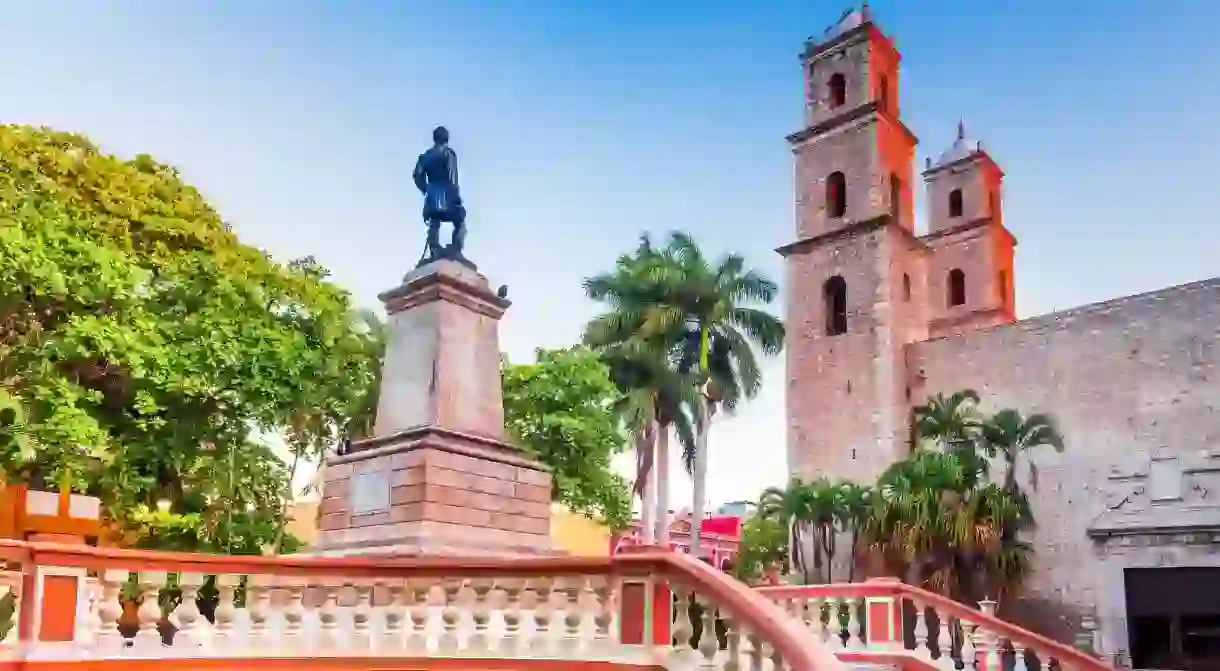A Guide to Mérida: Mexico's Most Thriving and Budget-Friendly City

The beautiful colonial city of Mérida, the capital of Yucatán state in Mexico, has always had a unique atmosphere – its geographical isolation from the rest of the country ensures that. This traditional refuge of Mayan culture, splendid architecture and vibrant cuisine is currently undergoing something of a transformation, as travelers look beyond the nearby tourist hubs of Cancún and Tulum. Here is our guide to the sizzling state capital.
Discover the best attractions and food the region has to offer – liquor tastings and cooking classes included – by booking onto Culture Trip’s nine-day Yucatán Peninsula tour.
Hanging out
The social center of Mérida is the Plaza Grande, which is one of Mexico’s most elegant plazas. Shaded by an impressive array of trees, you’ll find locals relaxing on the park benches or strolling its labyrinthine walkways. There’s a daily flag-raising ceremony and a market on Sunday offering traditional crafts, jewelry and pottery from the state of Mérida and beyond. The plaza tends to fill in the evenings, and there are live performances from musicians or dancers. Keep an eye out for jarana yucateca, the traditional folk dance of the Yucatán Peninsula. In order to demonstrate their perfect poise, dancers sometimes perform with trays holding drinks bottles balanced on their head.
To the south of the Plaza Grande is the Casa de Montejo, a mansion built between 1542 and 1549 by Francisco de Montejo, the Spanish conquistador who founded Mérida. The beautifully preserved 16th century house was owned by the Montejos until 1970, and is now a museum displaying the family’s renovated furniture. The façade offers a fascinating glimpse into the colonial mindset and the stories the victors told. Carved into the building are depictions of the brave conquistadores battling hordes of vicious barbarians.

Music
Yucatan is famous throughout Mexico for its rich musical heritage. Trova, or troabadour music, with its roots in Cuban and Colombian rhythms, has a particularly storied history in the region.
The Museo de la Canción Yucateca displays guitars and other memorabilia that belonged to Yucatan’s greatest trova artists. Outside is a statue of Ricardo Palmerín, the artist who composed La Peregrina (The Pilgrim) in 1923.
The beautiful trova was commissioned by Felipe Carrillo, the governor of Yucatan, for his fiancée, the American journalist Alma Reed. (As befits the genre, the relationship was ill-fated. Carrillo was executed by a rebel army while Reed was at home in San Francisco preparing for their wedding.)
The Parque Santa Lucía is another excellent place to hear Mérida’s haunting traditional music. The pretty little park is surrounded by classy restaurants and on Thursdays from 9pm it becomes the stage for Serenatas Yucatecas (Yucatecan Serenades), a free weekly concert that showcases some of the city’s best musicians. If you’re longing for a distant love or wallowing in the anguish of a broken heart, this is the spot for you.
Eating
Southwest of the Parque Santa Lucía, is La Chaya Maya, an authentic and inexpensive place to try Mérida’s traditional cuisine. Named after the tree spinach that is frequently used in the region’s cuisine, the restaurant is located in a beautiful colonial building and is an excellent place to sample mukbil pollo. This Mayan classic is made of masa or dough filled with a highly seasoned mixture of pork and chicken, all cooked in a banana leaf. The finished result is a kind of tamal pie that is typically offered to deceased family members on the Day of the Dead in November.
Cochinita pibil, consisting of pork marinated in ground achiote seeds and orange juice, comes highly recommended.

Mayan culture
Mérida’s most impressive museum, the Gran Museo del Mundo Maya, is connected to the city center by the Paseo de Montejo, one of the longest avenues in the city. The museum houses a spectacular collection of Mayan relics, art and jewelry. The museum’s exhibitions begin documenting the present day, and travel all the way back to the extinction of the dinosaurs (it is thought that the meteorite that wiped out the dinosaurs hit northern Mérida).
The architecture of the building alone makes a visit worthwhile. Inaugurated in 2012, the contemporary green and grey structure mimics the form of a ceiba, the sacred tree believed by the Maya to connect Earth with the heavens and the underworld. The museum frequently stages a free light show on the building at night.














